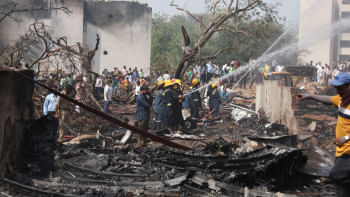Time to put Powerplay to use

For the past five years, New Zealand have been Bangladesh's most gracious hosts in international cricket.
While the Tigers have to wait for years on end for an invitation from other top teams like India, Australia, England, and South Africa, the Kiwis have hosted them for bilateral tours four times in the last five years.
Since 2019, Bangladesh have played 17 matches -- four Tests, eight ODIs, and five T20Is -- against the Black Caps in New Zealand and the tally will increase to 18 today with the third ODI of the three-match series in Napier.
For comparison, the Tigers have faced Zimbabwe, their most familiar foes in international cricket, in Zimbabwe 13 times across three formats in the same period.
Perhaps, it was these regular trips that aided Bangladesh in pulling off their historic win in Test cricket in Mount Maunganui in last year's January.
But in white-ball cricket, the Tigers are yet to solve the puzzle, at least until the third ODI begins today at 4:00 am Bangladesh time.
The seven-wicket defeat in the second ODI in Nelson on Wednesday stretched Bangladesh's losing streak to 18 in 50-over cricket against New Zealand in their backyard.
Following the defeat, which also ensured Bangladesh's sixth ODI series loss in New Zealand, stand-in skipper Najmul Hossain Shanto gave a typical explanation behind this continued failure, specifically highlighting the lack of wicket-taking edge of the bowlers.
'It is a challenge for them [bowlers] as well. They do not bowl too much in such conditions. The quicker they learn, the better," Shanto told the media yesterday.
But his explanation falls flat, considering the number of matches Bangladesh have played in the country in the last few years.
A better explanation of the failure would be the team's failure to capitalise the first Powerplay in both their batting and bowling innings.
The Tigers have been guilty of losing too many wickets in the first 10 overs and of also not being able to take early wickets with the ball.
Both of these failures occurred in the second ODI, where Bangladesh lost three wickets in 9.4 overs and could not make any breakthrough in the first Powerplay with the ball in hand, reducing Soumya Sarkar's record-breaking century to just another stat.
Bangladesh have occasionally gotten it right in one of these two phases, like in the first ODI of the series when pacer Shoriful Islam struck twice in the first over to have the hosts reeling at 5-2.
But in the batting innings, Bangladesh lost opener Soumya for a duck in the first over and lost the wicket of Shanto in the seventh over, right after the first Powerplay in that rain-curtailed 30-over-a-side match.
New Zealand also had a similar lean patch in ODIs against Bangladesh in Bangladesh. They were swept clean in two consecutive series, 4-0 in 2010 and 3-0 in 2013.
But in this year's September, the Kiwis redeemed themselves by beating Bangladesh 2-0 in an ODI series with a second-string team.
Today, Bangladesh will get a chance to end their losing streak. If they fail, the Tigers will have to add this series to their ever-growing list of bilateral engagements in New Zealand where the only thing they gain is experience, which proves useless by the time the next series comes along. And for it not to happen, the Powerplay issue needs to be solved.

 For all latest news, follow The Daily Star's Google News channel.
For all latest news, follow The Daily Star's Google News channel. 








Comments